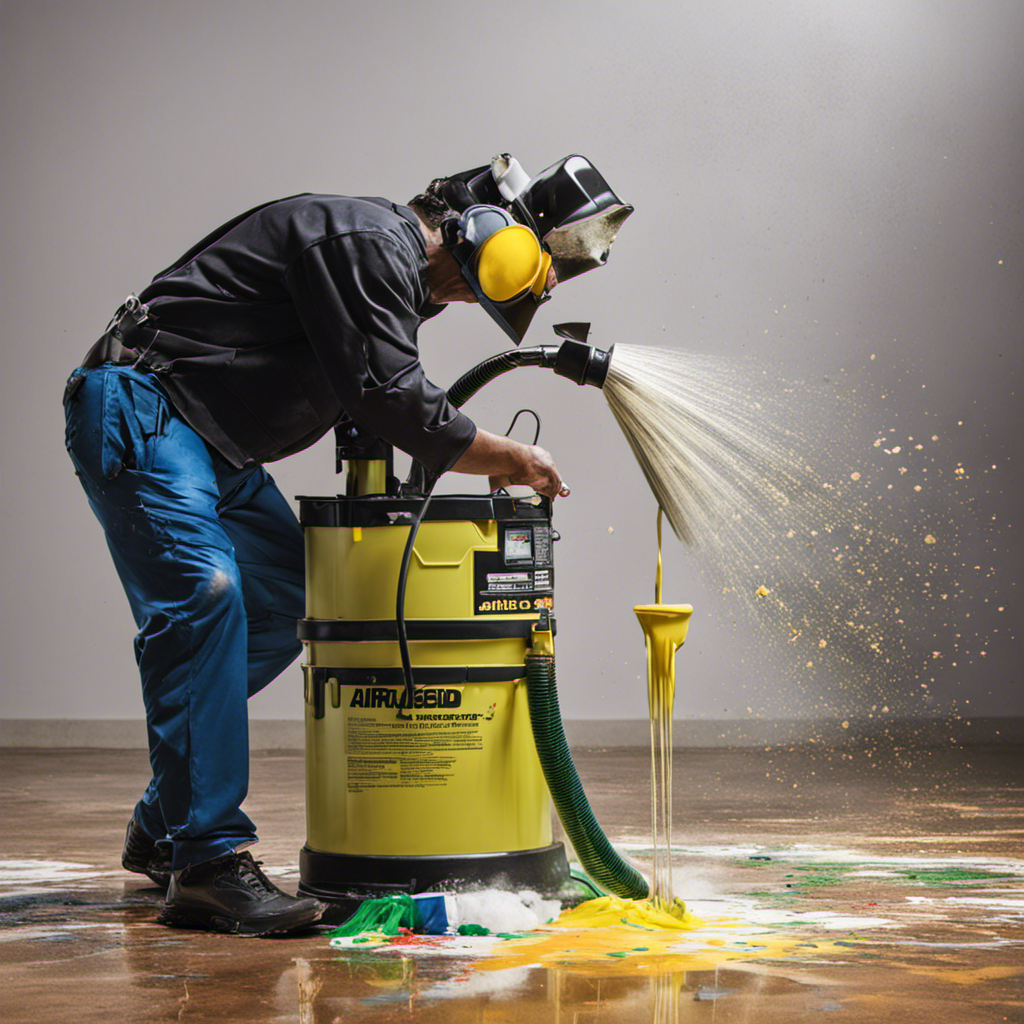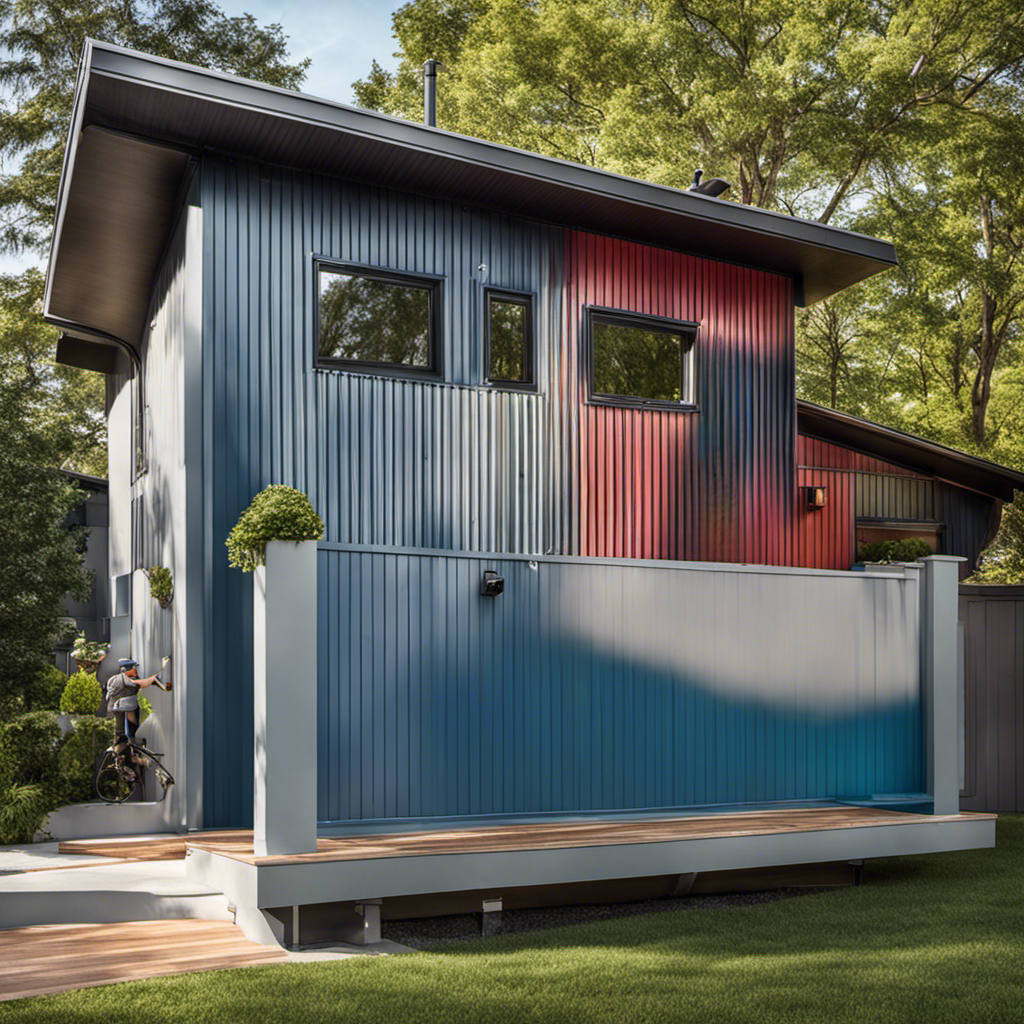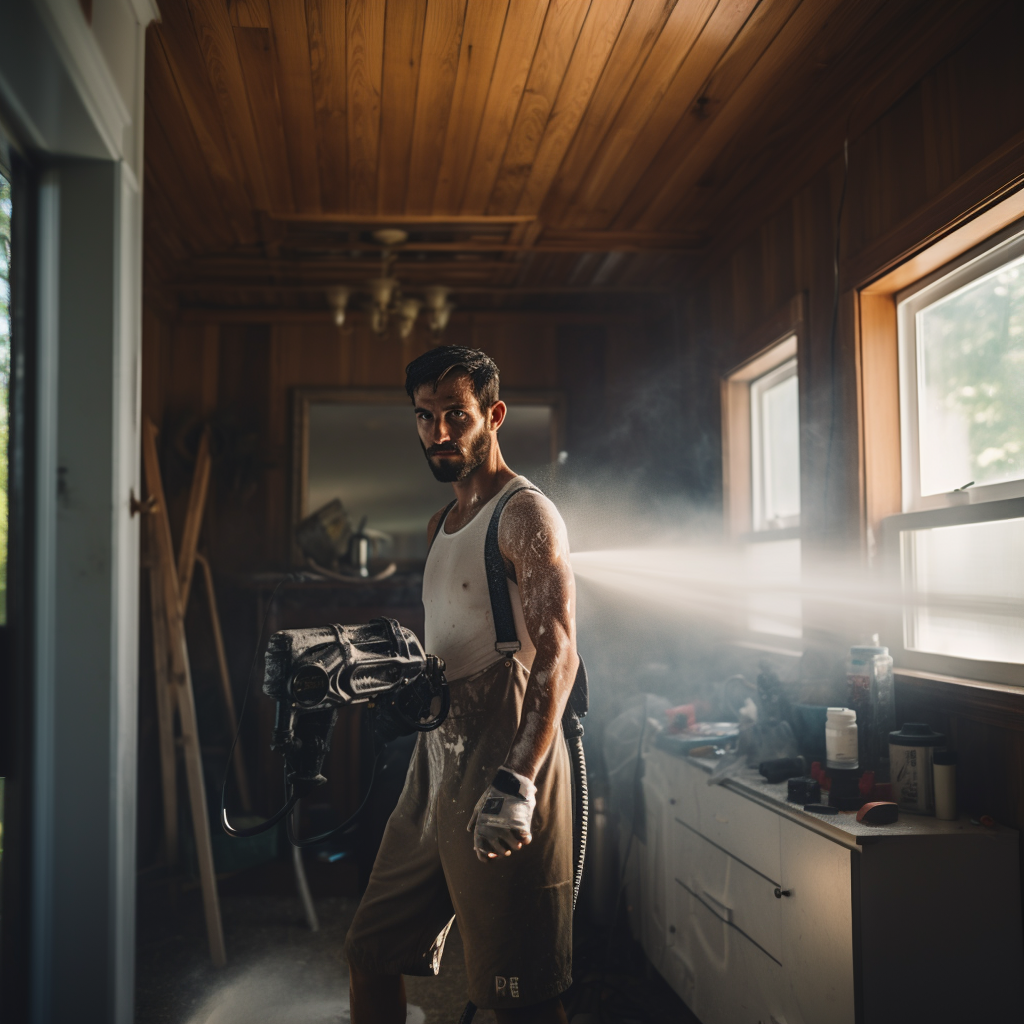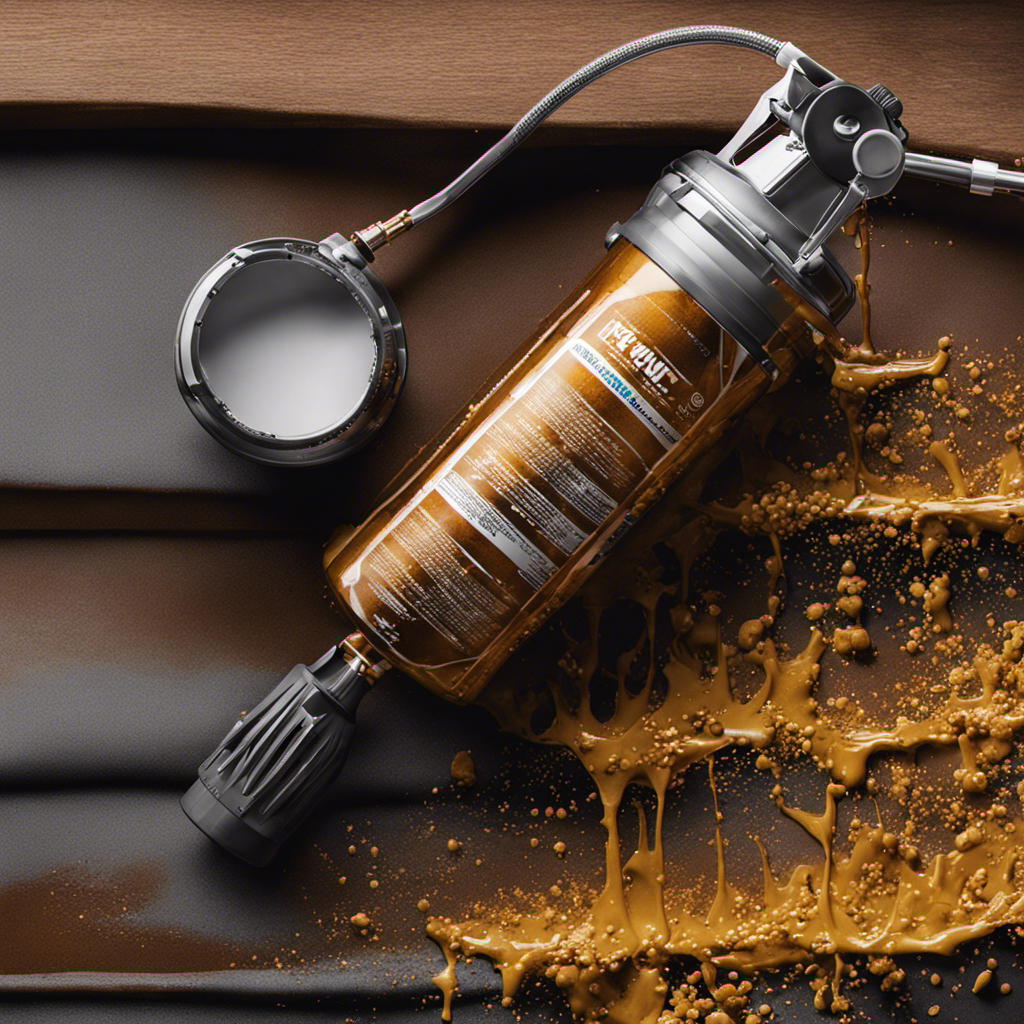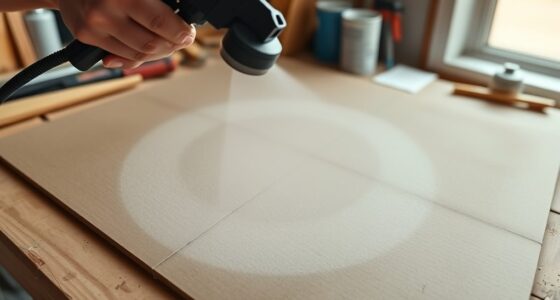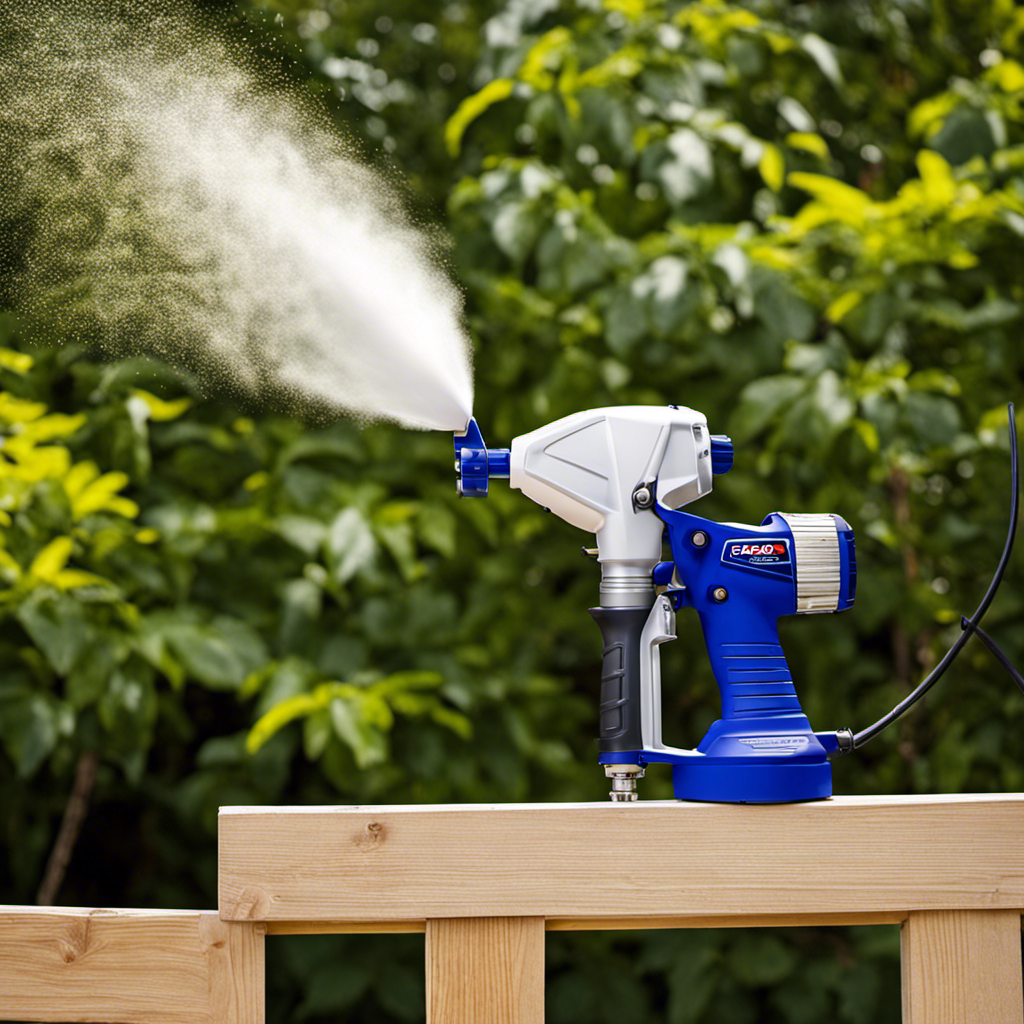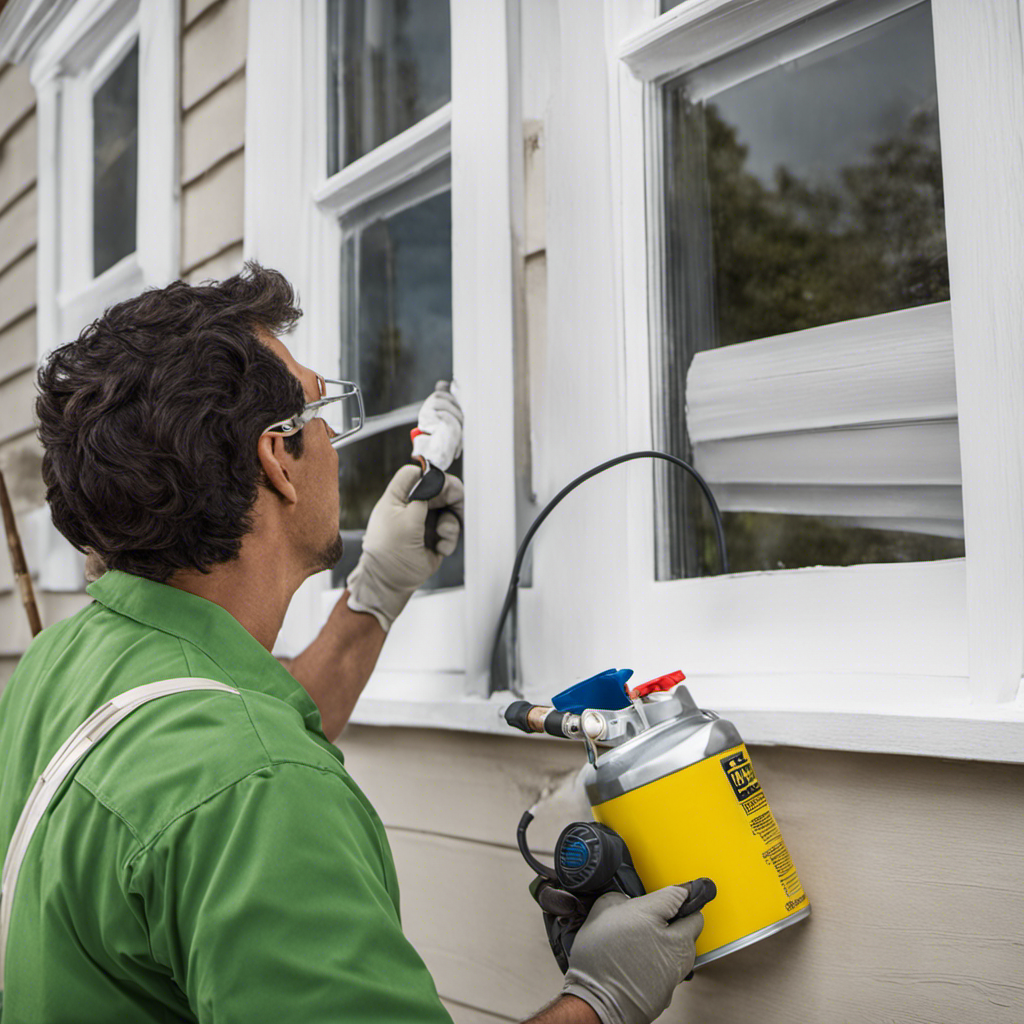Are you tired of dealing with frustrating clogs, inconsistent spray patterns, and messy drips while using your airless paint sprayer? Don’t worry, we have a solution for you!
This comprehensive guide will empower you to troubleshoot and conquer these common issues like a pro. With step-by-step tutorials and expert analysis, Joe, our airless paint sprayer guru, will walk you through the necessary techniques and maintenance tips to achieve flawless finishes every time.
Say goodbye to painting woes and hello to confidence in tackling your projects!
Key Takeaways
- Clogging due to dried paint or debris can be resolved by cleaning the tip with warm water or cleaning solution and using a strainer or filter to prevent clogs.
- Uneven spraying or spattering can be caused by improper pressure settings or worn-out spray tips, which can be resolved by adjusting pressure and replacing worn spray tips.
- Regular maintenance of the airless sprayer, including cleaning after every use, checking and cleaning/replacing filters, proper lubrication of moving parts, and storing in a cool, dry place, is important for optimal performance.
- Following the manufacturer’s instructions for use and maintenance, as well as using the troubleshooting guide’s step-by-step solutions, is crucial for addressing common problems and achieving flawless finishes.
Common Causes of Airless Paint Sprayer Clogs
If you’re experiencing clogs in your airless paint sprayer, they are most likely caused by dried paint or debris. You can easily clean the tip with warm water or a cleaning solution.
To clean the tip, first, remove it from the sprayer and soak it in warm water or a cleaning solution for about 15 minutes. Use a small brush to scrub away any dried paint or debris. Rinse the tip thoroughly with clean water and ensure there are no obstructions.
Additionally, to prevent clogs in the future, it is recommended to strain the paint before pouring it into the sprayer to remove any lumps or impurities. Regularly cleaning the sprayer and performing maintenance checks will also help to prevent clogs and ensure optimal performance.
Resolving Uneven Spraying and Spattering Issues
To resolve uneven spraying and spattering issues, adjust the pressure and replace any worn spray tips. Troubleshooting techniques for airless paint sprayers often involve identifying the root cause of the problem and implementing precise solutions. One common issue faced by users is uneven spraying or spattering, which can result in an unsatisfactory finish. This problem can be caused by improper pressure settings or worn-out spray tips. By adjusting the pressure to the appropriate level and replacing any worn spray tips, you can effectively resolve this issue. To help you understand the importance of pressure adjustment and spray tip replacement, refer to the table below.
| Issue | Possible Cause | Solution |
|---|---|---|
| Uneven spraying or spattering | Improper pressure settings | Adjust the pressure to the recommended level |
| Uneven spraying or spattering | Worn-out spray tips | Replace worn spray tips with new ones |
Essential Maintenance Tips for Your Airless Sprayer
Regularly cleaning and replacing filters, lubricating moving parts, and storing your airless sprayer in a cool, dry place will ensure its optimal performance. To maintain your airless sprayer and prevent issues, follow these essential maintenance tips:
- Clean the sprayer after every use to remove any paint residue or debris that could clog the system.
- Regularly check and clean or replace filters to ensure proper paint flow and prevent clogging.
- Properly lubricate the moving parts of the sprayer to reduce friction and ensure smooth operation.
- Store the sprayer in a cool, dry place to prevent moisture from damaging the components.
By following these maintenance practices, you can extend the lifespan of your airless sprayer and avoid common issues such as clogging and uneven spraying.
Take care of your equipment, and it will continue to perform at its best.
The Significance of Regular Maintenance for Optimal Performance
By regularly maintaining your airless sprayer, you ensure optimal performance and prevent common issues from arising. Neglecting maintenance can lead to costly consequences such as decreased efficiency, uneven spraying, and clogging. Routine maintenance offers several benefits, including prolonging the lifespan of your sprayer, reducing the risk of breakdowns during projects, and ensuring consistent and smooth paint application. To emphasize the importance of regular maintenance, consider the following table:
| Benefits of Routine Maintenance | Consequences of Neglecting Maintenance |
|---|---|
| Prolongs sprayer lifespan | Decreased efficiency |
| Reduces risk of breakdowns | Uneven spraying |
| Ensures consistent application | Clogging |
Regularly cleaning the sprayer, checking and replacing filters, lubricating moving parts, and storing it properly are essential maintenance tasks. Following the manufacturer’s instructions and conducting routine maintenance checks will help you achieve optimal performance and avoid the hassles of troubleshooting common issues.
About the Author and Expertise in Troubleshooting Airless Paint Sprayer Problems
Joe’s expertise in troubleshooting and his ability to simplify complex ideas make him a valuable resource for understanding and resolving issues with your airless paint sprayer. With his experience in troubleshooting airless paint sprayers, Joe has developed a deep understanding of the common issues that users face and the expertise to provide practical solutions. Whether you are a DIY enthusiast or a professional painter, Joe’s knowledge can enhance your painting projects.
Here are some of the common problems Joe can help you resolve:
-
Clogging due to dried paint or debris: Joe can guide you on cleaning the tip with warm water or a cleaning solution and using a strainer or filter to prevent clogs.
-
Uneven spraying or spattering: Joe can assist you in adjusting the pressure and replacing worn spray tips to ensure a smooth and even application.
-
Maintaining your airless sprayer: Joe can provide tips on cleaning the sprayer, regularly checking and cleaning/replacing filters, proper lubrication of moving parts, and storing the sprayer in a cool, dry place.
-
Importance of regular maintenance: Joe can emphasize the significance of following the manufacturer’s instructions for use and maintenance, conducting routine maintenance checks for wear or damage, and utilizing the troubleshooting guide for step-by-step solutions.
Frequently Asked Questions
How Do I Choose the Right Spray Tip for My Airless Paint Sprayer?
Choosing the correct spray tip for your airless paint sprayer can greatly affect the quality of your paint job. It’s important to select the right tip size and fan width for the type of paint you’re using and the surface you’re painting.
The tip size determines the amount of paint being sprayed, while the fan width determines the coverage area. Consider factors like paint viscosity, surface texture, and desired finish to make an informed decision.
What Should I Do if My Airless Paint Sprayer Is Not Priming Properly?
If your airless paint sprayer is not priming properly, there could be a few troubleshooting techniques you can try.
First, check if the suction tube is properly immersed in the paint. If it is, ensure that the inlet valve is not clogged with debris. You can clean it by using warm water or a cleaning solution.
Additionally, make sure that the pump has enough pressure and that the prime valve is fully closed.
These steps should help resolve the priming issue.
Can I Use Any Type of Paint With an Airless Paint Sprayer?
Yes, you can use a variety of paints with an airless paint sprayer. However, it’s important to ensure paint compatibility and follow the manufacturer’s recommendations.
Water-based paints are commonly used, but you can also use oil-based paints or stains. Some airless paint sprayers also offer the option to use alternative paint options such as latex or acrylic paints.
Always check the paint label for recommended application methods and consult the sprayer’s manual for specific instructions on paint compatibility.
How Often Should I Replace the Filters in My Airless Paint Sprayer?
To clean the filters in your airless paint sprayer, you should follow these steps:
First, remove the filters from the sprayer. Rinse them with warm water and a cleaning solution to remove any paint or debris.
Allow them to dry completely before reinstalling.
It is important to clean the filters regularly to prevent clogging and ensure optimal performance.
When it comes to using filters, it’s recommended to stick with the same brand as your sprayer for compatibility and best results.
What Are Some Common Safety Precautions to Keep in Mind When Using an Airless Paint Sprayer?
To ensure your safety when using an airless paint sprayer, it is important to take certain precautions.
First, always wear a respirator to protect yourself from inhaling harmful paint fumes.
Additionally, don’t forget to wear safety goggles to shield your eyes from any potential splatters or debris.
These precautions are crucial in maintaining your well-being and preventing any accidents or health hazards.
Conclusion
In conclusion, troubleshooting airless paint sprayer problems is essential for achieving flawless finishes in your painting projects. By following the comprehensive guide provided in this article, you can easily resolve issues such as clogging, uneven spraying, and spattering.
Remember, regular maintenance is crucial for optimal performance of your airless sprayer, just like how regular exercise keeps your body in top shape. So, don’t neglect your sprayer, give it the care it deserves and enjoy painting with ease and precision, like a skilled artist with a well-tuned instrument.
Franz came aboard the Paint Sprayer Zone team with a background in both journalism and home renovation. His articulate writing style, combined with a passion for DIY projects, makes him an invaluable asset. Franz has a knack for breaking down technical jargon into easy-to-understand content, ensuring that even the most novice of readers can grasp the complexities of paint sprayers.
